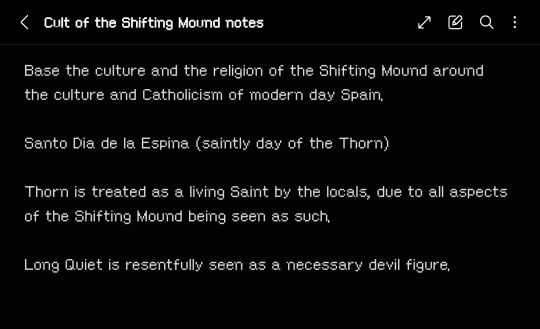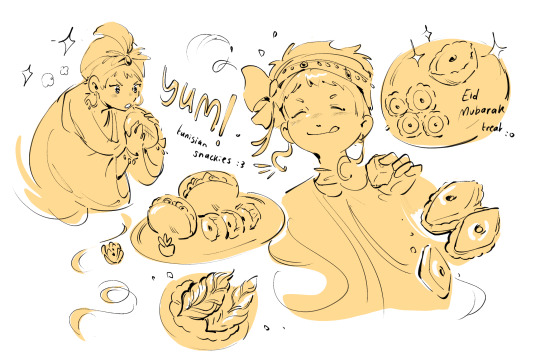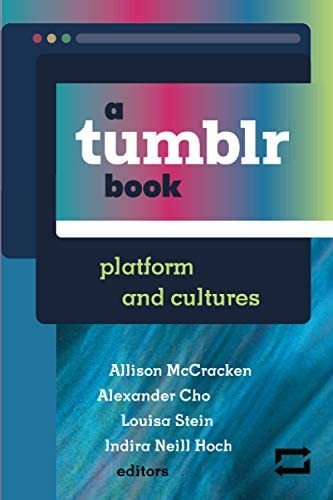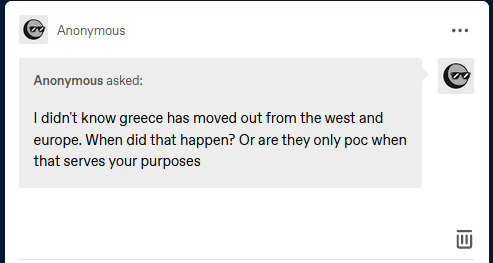#cultural research
Text
Hi, so I'm working on a story that's a huge fantasy world with different countries present and I want the references to real world cultures to be heartfelt and also I'm just generally enthusiastic about learning about new cultures, so like please do ask or message me talking about your culture because I am all ears and writing it the heck down.
(In the story I'm working on, I'm primarily researching Jewish, Peruvian, Irish, Balinese, several parts of Central Asia, and Sotho cultures, but honestly no matter where you're from, I wanna hear what you have to say! The world's a big beautiful place we could all learn more from!)
#culture#cultural studies#cultural research#writing#writing research#Jewish Culture#Peru#Ireland#Bali#Indonesia#Lesotho#Central Asia#Kazakhstan#Uzbekistan#Kyrgyzstan#Tajikistan#Turkmenistan#Afghanistan#Iran#Mongolia#I really really wanna hear what you have to say!#Legit I'm excited to hear about you guys!
7 notes
·
View notes
Text
A sneak peak into my creative process for how I wanna set up some things in my Slay the Princess fanfics.

I chose Modern day Spain specifically as a nod to the amount of Spanish people I've seen enjoying this game, and my conversations with @7w7m7w7 who is wonderful.
I'm trying to be as respectful as possible, which means doing research and double checking that what i just read isnt some hyper specific and outlier persepctive, so chapter 5 is gonna take a minute I'm afraid.
If anyone else from Spain wants to give me tips and pointers for how to translate Spanish Catholicism into Slay the Princess, I would be grateful.
#modeus's autistic ramblings#slay the princess#fanfiction#cultural research#i am EXTREMELY ignorant of religion outside of Southern Methodism#which i am still ignorant of since i hated church and became a full blown atheist in my teens
13 notes
·
View notes
Text
Help I just spent over an hour researching a food that could be reasonably prepared by a German that both a Russian and a Japanese man would be unfamiliar with and likely somewhat offput by for A SINGLE LINE IN A FIC
I settled on Mett, btw. Raw minced pork.
#say what valid things you will about Genshin#I quite literally know three times as much about China than I did before#I have had to do#SO MUCH#CULTURAL RESEARCH#FOR EVERY GODDAMN FIC I WRITE#daily life with mercy#writing
2 notes
·
View notes
Text
Edit: If you come from LinkTree, you can scroll to bottom for a recent update! :)
Culture Club!
As a part of my own cultural research for various writing projects (and because of my personal beliefs—the purpose of education being to become a more well-rounded and loving person), I’ve been doing a lot of research into Judaism lately. I’m still very much a beginner; very thankful to all the friends, online and otherwise, who have been willing to share their culture with me, a girl who started out as an undereducated, basic, White-trash, agnostic semi-Methodist from Tennessee.
Y’all, there is so much to learn! It is such a healing and loving process to better understand the culture and heritage of your friends and fellow human beings. You will feel better. They will feel better. And the Internet makes it so easy! Even if you aren’t a writer, I can’t recommend it enough. ☺️
I come from a background of largely inadequate K-12 public schooling, I think it’s fair to say, when it comes to learning about other cultures and marginalized communities, so I had to teach myself how to learn this kind of information once I got to college. But it is possible, through the power of the Internet, to learn earlier—with a little bit of guidance.
Doing this research, it occurred to me there are probably a lot of people who have had a similar experience: Young people (or old—it’s never too late to learn!) who feel overwhelmed by all they don’t know (as I did when I first left the South), like they don’t know where to start or who to ask, or are embarrassed by their own ignorance. It is overwhelming. It is scary, feeling like a you’ve been left behind and like you can never be the understanding, loving person you want to be for your friends and the people you love. It’s very scary to admit how little you know.
But we are not helpless! Especially not if we help each other. ☺️
In this series, I will take you along on a highlight tour of the cultural research I’m doing, for myself and my writing. You can feel free to read/watch/discuss along with me, or use the research tips I’ve stumbled across to research other topics of interest to you. Education is for everybody, and we can all be better if we put in the effort to become so together!
This Week: Starting on Judaism + Basic Research
Research Tips—Starting with Videos!
Especially when approaching learning about a new culture from a writerly perspective, immerse yourself as much as possible! Don’t be afraid to admit your ignorance to your search history; people IRL will thank you for it.
Long ago, I started out searching for “Judaism for dummies” on YouTube and found this video, and it taught me tons! And, importantly, it gave me a jumping off point to search for more specific information from places like my university’s library website, Google scholar, and etc.
Pro tip: If you don’t have access to a University or school library, try your local library! Many cities (such as the DC/Maryland/Virginia area, where I live) have libraries with free, fully-online sign-up programs and HUGE archives of eBooks, audiobooks, and other resources both digital and physical. Download the Libby app (iOS, Android) to easily connect multiple library cards with your phone, manage digital checkouts across libraries, and read e-books and audiobooks (aka LIFESAVERS imo) checked out from the library. (Some of us still have cards from back home in high school!) Also, the Internet Archive has tons of digital materials available to read in-browser for free.
Starting off with introductory videos is often a great idea in my experience, then from there, you can dig into scholarly articles and even books on various topics (e.g. The Everything Judaism Book: A complete primer to the Jewish faith— from holidays and rituals to tradition and culture by Richard Banks for this particular research project).
Also, social media can prove a great resource! The point of cultural research is to actually understand culture, both historically and in the present, and academia can be classist, sexist, racist, homophobic, ableist, etc. other terribleness—so listening to people speaking right now is a great way to learn about activism that is currently important, oral histories, and history that may have been suppressed due to intersectional oppression, settler colonialism, and White supremacy (e.g. queer histories of all SORTS of cultures; they often get squashed except by this popular, subversive discourse). Also, while fact-learning is important, history class in K-12 teaches a lot of people that’s the beginning and end of cultural education; You can break out of just memorizing facts by taking the time to see, listen to, and more deeply understand the day-to-day impacts culture has on people.
When using social media, tags are important. For this project, I’ve spent a lot of time on TikTok, particularly #jewtok. @spacevinci’s video’s are SO packed with info, hilarious, and Miriam is a non-binary (they/them pronouns) Jewish person. And that’s just one place to start!
Wrapping up
I hope this has been helpful! If anyone is interested in my continuing this series, I’d be glad to.  I’ll keep y’all posted on ongoing research projects, maybe 1-2 updates per week (though as a warning, my brain is all over the place and I am not good at pacing myself lol, so the topics will probably bounce around as well) and I will try to include a helpful research tip or resource each post. Great way to journal my own education and hopefully be a low-judgment resource for other people who are trying to do the same.
Write me in the comments/reblog! (That’s how Tumblr works, right? 😆 I’m an ex-Twitter person, lol; this is ✨a whole new thing✨ for me.) Let me know if this sounds interesting!
Love to all and happy learning! :)

#tsf culture club#culture club#cultural research#sociology#anthropology#cultural education#education#educate yourself#judaism#lgbtqia#wandavision#jewtok#jewish#research#public libraries#sf culture club#wiccan#hulkling#young avengers
4 notes
·
View notes
Text

Kalim omnomnonmnomnom eat foods :3
#twisted wonderland#twst#twst fanart#doodle#kalim al asim#twst kalim#kalim#i made myself hungry for algerian dessery#i love food and culture research#i wishi could eat tunisian food
681 notes
·
View notes
Text
🍓Struggling with poor crop yield and health?
Chemical fertilizers causing more harm than good?
Discover the magic of Electro Culture! 🌱💫
🗺️The Journey :
Embrace the power of copper and ether to revive your plants. Watch as they almost double in size within just 2 weeks!
👛What's to Gain :
- Save on pricey pesticides and enhance your crops' nutrient density. Better for your pocket, better for Mother Earth! 🌍💚
🎓Trust in Science :
- Our advice is backed by the science of Plant Electrophysiology. This research reveals the positive impact electric fields can have on plant growth and resilience.
- Copper pulls the ether from the air, providing nourishment to plants. This process promotes growth, stress resistance, and biodiversity. 🦋🐞
🌾Ready to try?
- Just insert a stick with a copper wire near your plant (avoid damaging roots) and let it interact with the air. Simple!
✨Imagine a garden thriving with diverse, resilient, and nutrient-rich crops. With Electro Culture, this dream can become your reality.
What can a little copper on a stick do? 🤔
#pay attention#educate yourselves#educate yourself#knowledge is power#reeducate yourself#reeducate yourselves#think about it#think for yourselves#think for yourself#do your homework#do some research#do your own research#ask yourself questions#question everything#electro culture
588 notes
·
View notes
Text
i think it’s hilarious that we all immediately clocked trent as gay the second we laid eyes on him and we were fucking right
#whoever researched queer culture/queer signaling i commend you#also a lot of it was down to the performance of#james lance#the biggest trent crimm girlie of us all#ted lasso#ted lasso spoilers#ted lasso season 3#trent crimm#trent crimm gay#lgbtq
2K notes
·
View notes
Text
If you comment on some fanfics and not others, pick an answer that applies most commonly to when you don't comment.
#longlivefeedback#llf polls#ao3#commenting#fanfiction research#fanfiction survey#commenting and culture#comment culture#fandom#kudos#writing#writing feedback#commenting and community
2K notes
·
View notes
Text
A Jianghu Mystery of the Middle Xi: The Tomb of Li Xiangyi
By Qiling, University of □□ (2024)

Left: A photograph of the inscribed text at Li Xiangyi's tomb, reading, "The grave of the Sigu Sect's departed Sect Leader, Li Xiangyi". Right: Artist's sketch renditions from eye-level frontal and aerial side views, recreating how the tomb may have appeared during the Xi dynasty.
Among the numerous important archaeological finds from the Xi Dynasty, the tomb of Li Xiangyi is not the most well-known, nor has it yielded any artifacts of particular intrigue, yet it has raised questions about certain points in history since its discovery. The tomb constitutes a small site, near a mountainous overlook which should have received little common traffic at the time of construction. Its structure is in line with some other aristocratic burials of the Middle Xi period: aboveground, with a chamber at the center of a raised rectangular dais several meters wide, large enough to bear only a single individual. A stone marker, which has survived in legible condition until today, declares it the tomb of Li Xiangyi, leader of the Sigu jianghu sect.
Records about Li Xiangyi are found at other archaeological sites contemporary with this tomb, and so his name is not an obscure one. The Sigu Sect complex has already undergone excavation for nearly two decades, with evidence that Li Xiangyi spent several years there as its first sect leader and founder. His tomb is within two hours' walking distance of the Sigu site, though isolated in its location, compared to the Sigu Sect's grand mountain entrance. (The complex itself was inhabited well after his death; bamboo slips cite Qiao Wanmian as the Sigu Sect's next major leader some years after, who oversaw it for several more decades into the later Xi). In addition, the Baichuan-Pudu site, closer to the eastern coast and historically the headquarters for the Baichuan Court, is affiliated with Li Xiangyi. Its origins apparently lay in an offshoot of the Sigu Sect, which grew into its own independent legal organization after his death.
Legends surrounding Li Xiangyi's life have been well-documented, both at Sigu and Baichuan-Pudu, but also in books and transcriptions of oral stories at sites around the country. These are dated to both the Middle and Late Xi periods, as well as a few scattered mentions in writings from the following dynasty. As a jianghu sect leader and swordsman, Li Xiangyi's reputation truly preceded him. Some tales speak of his early accomplishments, ridding towns of villainous tyrants and defeating criminals. Others talk about the founding of the Sigu Sect when Li Xiangyi was seventeen, and his subsequent missions leading his fellow swordsmen to protect the borders of the country. Not all of these narratives can be verified with surviving historical proof, and given Li Xiangyi's status in the shifting canon of folklore, the percentage that are hyperbole or fiction is likely significant. However, one that should be true, and is the most frequently told story throughout these sources, is that of Li Xiangyi's death.
All texts place Li Xiangyi as having died relatively young, with some providing a specified age, generally around twenty. He perished in a duel with Di Feisheng, leader of the Jinyuan Alliance, a rival jianghu organization and presumed threat to the Sigu Sect. As the sources say, the Jinyuan Alliance killed Li Xiangyi's sect brother, Shan Gudao, and in retaliation he used the Sigu Sect to launch a war against the Jinyuan Alliance. His final battle was the last in this war, dying in the East Sea on Di Feisheng's ship. The Jinyuan Alliance in return was badly defeated by the Sigu Sect; excavations at its first compound in the last five years have shown evidence of siege, with fire having destroyed large parts of the buildings. Afterward, the Sigu Sect disbanded without Li Xiangyi, with only the Baichuan Court continuing to function, before being resurrected one decade later.
Given this knowledge we have about Li Xiangyi, the matter of his burial should be straightforward. He had a tremendous impact on the jianghu in the few short years that he stood at its peak. He died heroically, if tragically, to obtain justice for a brother. He was honoured with a tomb, standing guard over the sect he dedicated his youth to. Why, then, is said tomb regarded as somewhat of a mystery?
This tomb was first stumbled upon during extended surveys of the Sigu site territory, with excavation taking place within the last two years. Parts of the stone chamber and foundation of the dais have withstood time, as have most things left inside. The tomb bears no signs of looting. However, there are some details which, alongside discoveries from other archaeological sites, contribute to a shadow of uncertainty on the existing narrative of Li Xiangyi's life.
Firstly, is that the austerity of the tomb does not line up with what we know of Li Xiangyi. Although overall sufficient enough for someone of his great reputation, the tomb is rather plainly embellished. There are an unexpectedly small number of burial objects inside, with those present being neither rare nor expensive. For all his contributions to the jianghu, less money and resources were poured into remembrance of Li Xiangyi than seems proper for his time.
Secondly, and far more significantly, is that the tomb holds no human remains. Whether the fact of Li Xiangyi having no recovered body to bury was made public is unknown; if it was, we do not have record of it. Certainly those who arranged for the tomb to be built and sealed would have carried this with them the rest of their lives, but no one else may be accounted for. Granted, it is not impossible for a disappeared body to have been common knowledge or presumption, as Li Xiangyi was killed at sea with no guarantee of being found. Yet this, combined with the ordinary appearance of the tomb, causes the entire site to appear... a nominal thing. Constructed to maintain acknowledgement of Li Xiangyi's absence, though his death was only marked by words, rather than a physical state.
He was given a tomb, but was Li Xiangyi truly dead before it was built?
In terms of the aforementioned other archaeological site findings, there is one that potentially implicates Li Xiangyi's death at an interesting political junction, within the context of the dynasty. The Xi Dynasty was unstable and relatively short-lived, established after taking back the Central Plains and adjacent territories from the southern conquering state of Nanyin. It endured for just under two centuries, the first of which was fraught with pockets of conflict, with many jianghu skirmishes such as that between the Sigu Sect and the Jinyuan Alliance. The greatest threat to the Xi Dynasty (until its fall) came one hundred years after its founding. Recovered archival records from the Xi capital excavation report that remaining Nanyin loyalists attempted a coup, supported by jianghu organizations, including a restored Jinyuan Alliance (although whether Di Feisheng was still its leader at this time is unclear). This attack was ultimately unsuccessful, but important to note is that the leader of this renewed Nanyin force is described as being Shan Gudao, Li Xiangyi's former sect brother.
Although Li Xiangyi brought the Sigu Sect into a war upon news of Shan Gudao's death, that demise seems to have been faked, with Shan Gudao disappearing underground only to reappear as part of a later rebellion. Could Li Xiangyi have been aware of this? Was his reaction to Shan Gudao's apparent death genuine? Or part of a coordinated plan, using him as a reason to destroy the Jinyuan Alliance, to eradicate any future resistance? Did Li Xiangyi, too, fake his death alongside Shan Gudao, in service of a shared cause? Were remnants of the Sigu Sect instructed to build an empty tomb, cementing Li Xiangyi as a dead hero so he could work in the shadows of the jianghu instead?
This is merely speculation, contradicted by the fact that if Li Xiangyi had indeed done as such, unlike Shan Gudao, after his duel with Di Feisheng he has no reappearance in any surviving records or at any archaeological site. As well, Li Xiangyi should have had no motivation for committing to such a scheme, with even loyalty to Shan Gudao a stretch for putting all the lives of the Sigu Sect on the line. That being said, history has a way of surprising the present, and this theory may not be entirely ruled out. At any rate, Shan Gudao's survival is a baffling accompaniment to Li Xiangyi's (lack of a) burial, one which will hopefully receive clarifying answers in future archaeological developments.
Perhaps the strangest piece of the puzzle concerning the end of Li Xiangyi's life, however, is Di Feisheng. After the Jinyuan Alliance was scattered by the Sigu Sect, stories regarding Li Xiangyi declared him dead and disappeared. Yet not unlike Shan Gudao, he became known in the jianghu once more about ten years later, witnessing the Nanyin's attempted coup and living long after. His tomb remained untouched, and was excavated eight years ago as part of the greater Tianji Mountain site project. The location of Di Feisheng's tomb is surprising, not only because it directly links him to the powerful and wealthy He clan of Tianji Manor, but also because he was buried next to their sole young master during the Xi Dynasty, Fang Duobing.
The son of financial minister Fang Zeshi and engineering master He Xiaohui, Fang Duobing became a notable youxia travelling the jianghu in the emperor's name, assigned in the wake of the attempted Nanyin coup. According to palace records, he was also betrothed to Princess Zhaoling, although the marriage agreement was eventually formally dissolved. What is otherwise known of Fang Duobing was his admiration of Li Xiangyi, having styled himself as a follower and disciple of him during his youth. As well, one eye-catching artifact among Fang Duobing's burial goods was a preserved wooden replica of a blade, with Li Xiangyi's name carved near the hilt. Likely a children's toy, prized and kept safe throughout Fang Duobing's life.
The exact nature of the relationship between Di Feisheng and Fang Duobing is not entirely certain, but it must have been a very close one, for Di Feisheng to have the privilege of burial on the Tianji estate. This topic justifies future study for our understanding of the Tianji He clan, already known in prior generations for its socially subversive relationships, but pertinent to Li Xiangyi is that the man whose most infamous act was to kill him, was laid to rest beside one who revered him. Why was there such a bond between these two figures, if the stories of Li Xiangyi's death have any truth to them? Did Li Xiangyi really die by Di Feisheng's blade? Did Li Xiangyi's empty tomb, plausibly signifying Di Feisheng's innocence, alter his relationship with Fang Duobing? Or indeed, did Li Xiangyi, the man himself, have a part to play in this?
No traces of him from this time remain in the archaeological record, true. But this should not be taken to mean without doubt that he was not alive then at all.
The discovery of Li Xiangyi's tomb has been an exciting development for studying this era of the Xi Dynasty, but it has also outlined doubt in areas of one man's life that were previously taken as likely facts. Li Xiangyi's tomb is scarcely fitting for his name as a founding sect leader, built more for the sake of its existence than anything else, and there was no body sealed inside to begin with. In addition, Shan Gudao— someone dear to Li Xiangyi— established a precedent of faking his death. Di Feisheng, known across the jianghu for killing the man, held a close bond with someone later in life who had personally looked up to Li Xiangyi, and so he may not have been fully responsible for Li Xiangyi's death to begin with.
What truly happened to Li Xiangyi, resulting in a tomb such as this? The past holds the answer, knowing things that we do not. Hopefully the future of archaeology will continue leading to new discoveries, and allow us to more completely understand the legend that was Li Xiangyi.
#this is probably a better archaeological research paper than the one i wrote on sanxingdui a few days ago#anyways hi yes. i just impulse wrote a fake archaeological paper for fun. enrichment. whatever#also i tried not to sound too pop culture archaeology in this#to any other anthropology or archaeology majors. if it comes off that way i am sorry </3 it's past 4am rn#mysterious lotus casebook#li xiangyi#di feisheng#fang duobing#ashton writes fic#difang#<- to any difang shippers just sit with me for a bit and think about these two being buried together
93 notes
·
View notes
Text
I'm not mad I'm just disappointed because if you spent two seconds to think about how fur and leather alone has deep ties to human culture and our understanding and appreciation of the natural world it's honestly really beautiful and just feels so strange to me that people who say they love nature want to divorce themselves from it.
Like yes, capitalism bad. I don't agree with the way that animals are treated as products to the point where blatant animal cruelty is excused by mega corporations. I want places like that to be held accountable and made to follow higher welfare standards for the animals they raise and the underpaid employees out there working in sometimes awful and very unsafe conditions.
But if you're simultaneously ignoring the culture of African leathermaking or the beautiful leather and wool textiles crafted by Indigenous artisans or the ways that ancient humans appreciated the animals they killed for meat and clothing by telling stories and making art depicted on the skins of the animals they took, that's what bothers me.
So many people are willing to just attack vulnerable communities instead of learning about thier culture and how animal products were used traditionally and today. There are better ways to raise animals for products sustainably and humanely and many of these communities have spoken very loudly about it but are yelled over by people who just want to be right or don't want to listen or just don't care.
So yes, I will continue to speak my mind and educate myself because if nothing else I wanna be the start of the change I wanna see in the world. I love animals and I love learning the history of humans and our relationships to animals. I want to be able to appreciate them in the ways we always have. With respect to the natural world and understanding that we're also a part of it.
#jackal's journal#ok I'm done#I can't sleep so I'm rambling but#stop assuming your way is the only way#or that people who defend the use of animal products are just automatically siding with the devil#ya'll don't even know how hard it is to research my own cultural background because of this#like given I had the time and resources I would LOVE to study African-American leathermaking and use of animal products#but so many businesses were wiped from existence or bought up or shut down#lemme stop before I get too passionate in my own damn tags#I just got feelings
1K notes
·
View notes
Text
Research Study: Fandom & Generative AI still looking for participants!
I'm still recruiting research participants for my PhD dissertation study!!! If you've already participated, thanks so much! If you haven't participated yet, please consider responding to a quick survey, and sharing with your friends!
I'm interested in understanding fans' perspectives on and experiences with generative AI (text and image generation software). That means perceptions both positive and negative! However you feel about genAI, I'm interested in hearing from you. We're especially seeking diverse perspectives from underrepresented demographic groups of people.
If you're over 18, can speak/understand English, and are interested in participating you can learn more information and take the survey here. I've also made a FAQ post about the study that I've pinned to the top of the blog, and you can see more info on the shareable flyer below. You can also view posts on Twitter/X, Bluesky, and Reddit about the study and share info there! Spreading the word is greatly appreciated :)

The study is anonymous and voluntary, and you'll be asked about your fandom background, attitudes towards generative AI, and demographic information. The survey should take about 15-20 minutes, and you can skip over any questions you want. You can also elect to participate in a follow up interview, if you want to. The full details are on the consent form, which you'll be able to read before taking the survey! Feel free to reach out with any questions.
#fanfic#fandom#fanart#ai#art#writing#fan culture#fandom meta#fandom culture#fandom things#research#research study#fan fiction#fan art#fanfiction#ao3 fanfic#fic writing#artificial intelligence#technology#creative writing#creation#creativity#fandom polls#fandom research#fan studies#academic research#research survey#artists on tumblr#writers on tumblr#anime and manga
107 notes
·
View notes
Text

Well, well, well, look what we have here: a tumblr book: platform and cultures (2022) - An Open Access book on JSTOR.
Yes, read it, download it, share it with everyone! No login required.
#tumblr#fandom#tumblr culture#tumblr life#tumblr things#research#academic research#research!#open access books#open access#jstor
2K notes
·
View notes
Note
Intresting how its only trivializing and mocking green myths when non-greek white people do it, but not when non-greek poc do it. Its almost if you dont actually care

lmao bro what

i literally have zero clue what you're arguing here, "stop criticizing rachel for writing her greek myth retelling from a predominantly whitewashed westernized and christian-washed point view" ?? yeah okay lol
#i can't even tell what direction this strawman is trying to go in LOL#no one cares if you're white my guy#shit there are greek myth retellings that slap and are written by *gasp* non-greek white people!#if you write a story based on a culture that isn't your own just?? do your research ?? and don't write it like you hate it for existing???#some of y'all hurt yourselves in your own confusion as if it's such a chore to give a shit about the stories you're adapting lolol#“I didn't know greece has moved out from the west and europe” babe can you please point to me on a map where you think greece is#ama#ask me anything#anon ama#anon ask me anything
139 notes
·
View notes
Text

Young Nigerian woman in the late 1950's, photographer unknown
#style#nigeria#photography#photographie#art#photographie contemporaine#contemporary photography#african visual culture#visual culture#curation#research#manufcatoriel
352 notes
·
View notes
Text
Electro-culture... 🤔
#pay attention#educate yourselves#educate yourself#reeducate yourself#knowledge is power#reeducate yourselves#think for yourselves#think about it#think for yourself#do your homework#do some research#do your own research#ask yourself questions#question everything#electro culture
201 notes
·
View notes
Text
Fellow mythkin, cryptids, other nonhumans of the like, urban legend enthusiasts, and people in the anthropology (such as myself) or religious sciences fields:
#just noticed the irony of a nonhuman choosing anthropology as his major#please do note I'll use my own non-USAmerican upringing and culture as baseline of research#and that stories here can get batshit insane#*Poll#*My post#otherkin#nonhuman#mythkin#mythical nonhuman#cryptidkin#therian#beastkin#ghostkin#theriomythic#alterhuman#therianthropy#otherkinity#voidpunk#cryptidcore#anthropology#social studies#religious studies#divinekin#demonkin
75 notes
·
View notes